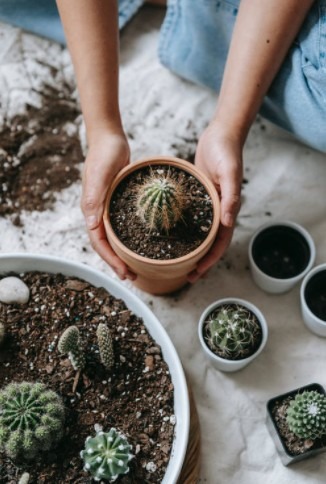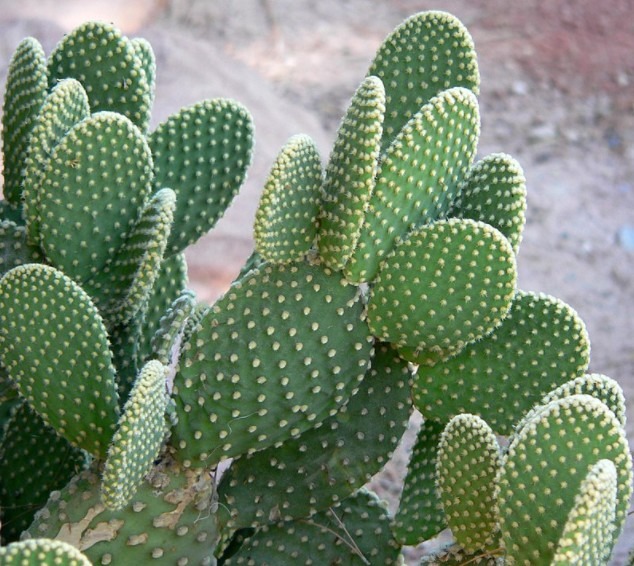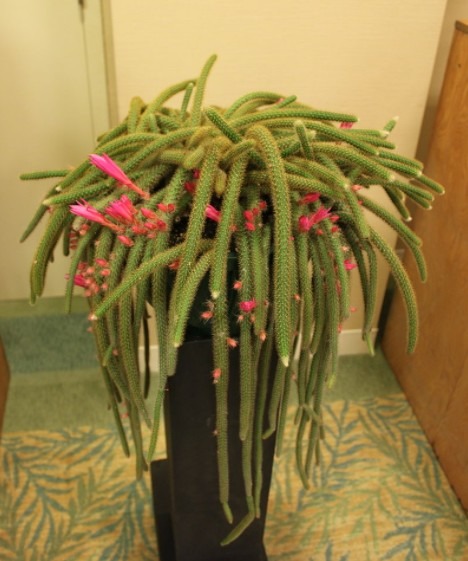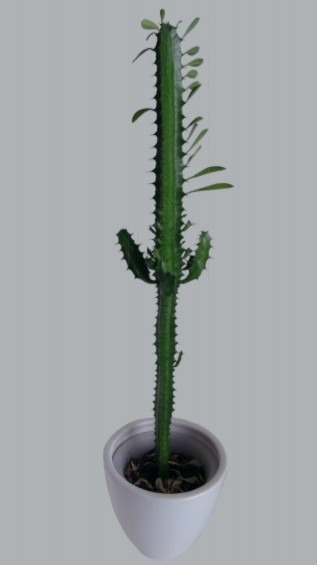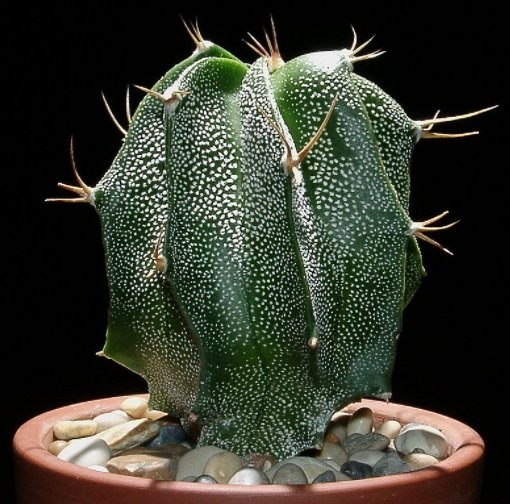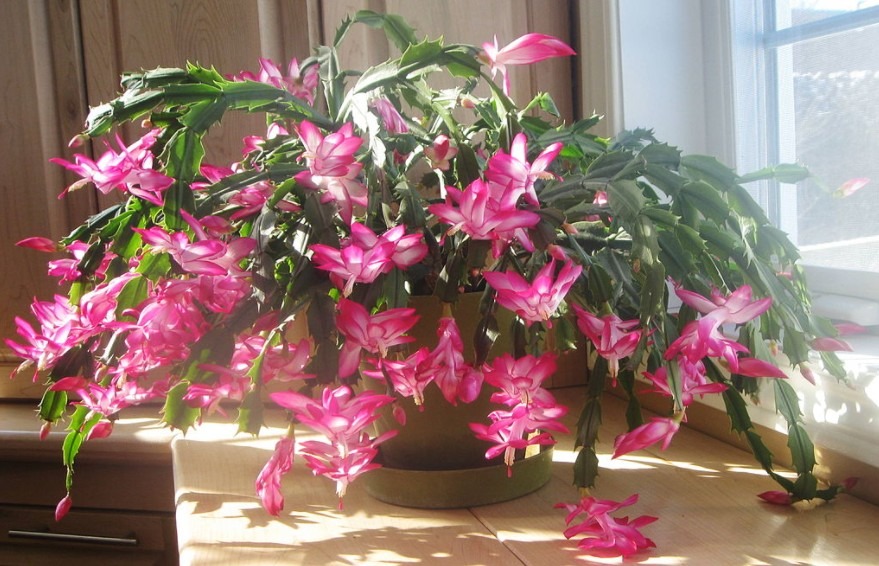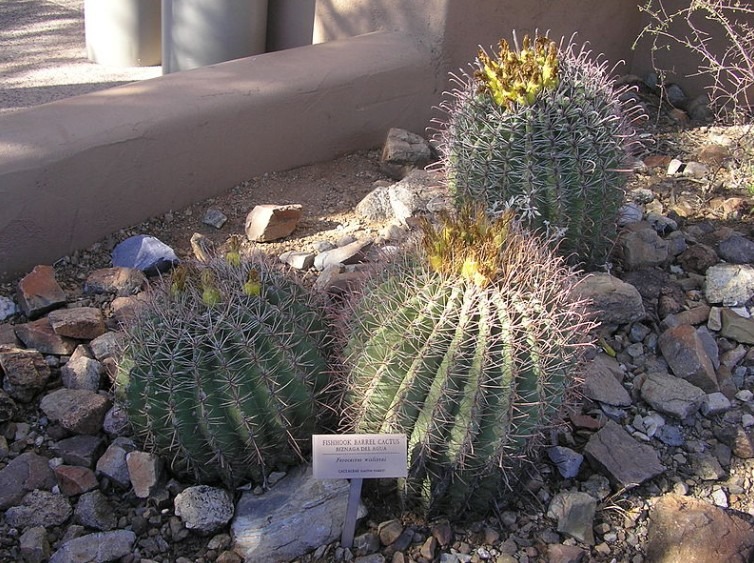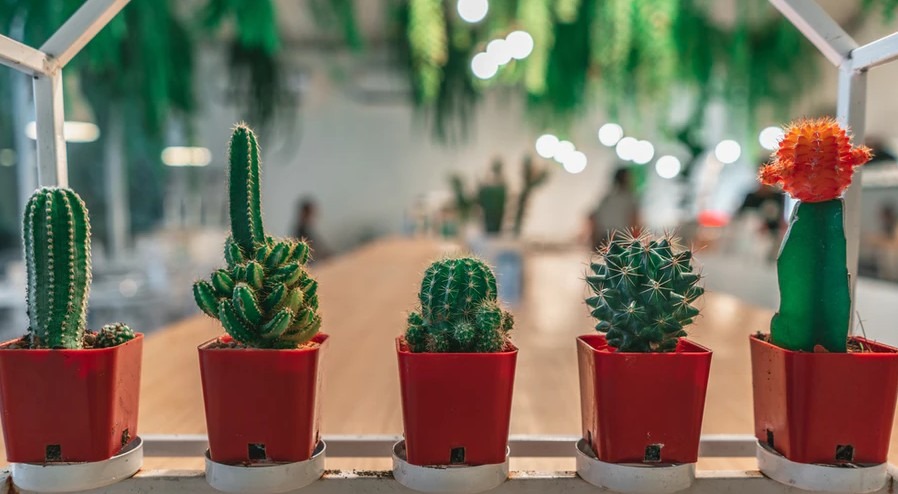Cacti make a great indoor plant, and once established, they don’t need a lot of water and extra care. Almost all cactus plants have a dormant period in the winter season when you are supposed to reduce the quantity of water supplied and limit the light levels to some extent.
Whatever the plant you choose amongst the cacti family, make sure to read the label carefully and pay extra attention to its botanical names.
General Care
A cactus is a low-maintenance, interesting houseplant. Remember that these are dessert plants; hence they can tolerate negligence in watering but never over-water them. They can even survive for months without being watered. So, it’s always better to let them dehydrate rather than to over-water them.
Usually, the large cactus plant needs a south-facing location so that it can get at least 6 hours of bright, direct sunlight.
Best Cactus Varieties to Grow Indoors
Following are 7 different indoor cactus plants that will decorate your home.
Note: Some of them may be toxic to your beloved pets.
1. Bunny Ears Cactus
Botanical Name: Opuntia microdasys
Color varieties: Pale yellow
Bunny Ears cactus are also called angel’s wings or polka-dot cactus. This cute plant belongs to the common “prickly pear cacti family.” It grows to a fairly large size. If you are searching for a large, attention-grabbing cactus, Bunny Ears is the best amongst all other cacti. These plants, rather than sharp spines, have evenly spaced clusters of hair. After due care and age, a small amount of milky pale yellow flowers, followed by deep purple, edible fruits, are expected.
It can grow up to six feet in height and three feet in width. As an indoor plant, it blooms well in a small to medium pot for many years. These clump-forming cacti are major sun lovers, so you need to keep them in a place that is in reach of enough daylight. Furthermore, make sure you maintain the indoor temperature between 55 to 100° Fahrenheit.
Plant Care Tips
Light: Full sunlight but reduced in winter season
Water: Regularly water it in the first year so it can form strong roots. Don’t water during winter
Soil: Well-draining soil
Pet Safety: Non-toxic to cats and dogs
2. Rat Tail Cactus
Botanical Name: Aporocactus flagelliformis
Color varieties: Violet-red, pink, and orange
Rat tail cactus, also known as Monkey Tail cactus, is a fast-growing cactus. It is native to Mexico, where its vibrant magenta blooms have been used as traditional therapy for cardiac diseases. If your sunniest window cannot accommodate a medium-size pot, consider hanging it in a basket for an attractive look. After due care and atmosphere, it may bloom reddish flowers in spring and summer.
Plant Care Tips
Light: Direct bright sunlight
Water: Regular watering in summers but reduce the quantity in winter during the dormant season
Soil: Rich, organic soil
Pet Safety: Toxic to cats and dogs
3. African Milk Tree
Botanical Name: Euphorbia trigona
Color varieties: Reddish-purple leaves
It is a striking succulent cactus that makes every beginner home gardener feel like an expert as it is very easy to grow. Euphorbia Trigona – also known as Cathedral Plant, does not demand a lot of attention. Outside, it can grow up to eight feet in height, but as an indoor plant, it is unlikely to grow much beyond four feet. Look for unique varieties, such as the Rubra variety that has reddish-purple leaves. It may leak off a milky substance which may be irritating to human skin. If not, this may be considered a nice gift because the African Milk Tree is often associated with good luck and friendship.
Plant it in well-drainage soil, and don’t forget to water twice a month. This may last for decades if cared for well.
Plant Care Tips
Light: a lot of direct sunlight
Water: Light, twice a month
Soil: Any type of soil
Pet Safety: Toxic to cats and dogs
4. Saguaro Cactus
Botanical Name: Carnegiea gigantea
Color varieties: White with yellow centers
These majestic plants can be mostly seen in the Sonoran Desert. The suguara grows at a very slow speed. For an indoor plant, it can take one or many years to grow. Keep your plant in as much light as possible and water after every 10 to 14 days. It is better to keep it in a small pot for the stronger establishment of its root system.
The classic cacti – Suguara, has a long lifespan of approximately 150 years. Flowering occurs between April and June. And it usually occurs after sunset and near mid-afternoon. The best part of this variety is that it will grow slowly and steadily in the same pot. The best thing about it is that you will rarely need to change its pot. If taken care of, it will develop pretty white blooms (but it will take years for flowering to occur).
After every ten years, Suguara will increase by 1 inch in height. Its red fruits are 2.4 to 3.5 inches and are edible.
Plant Care Tips
Light: Full sunlight
Water: Average amounts of water, every 10 to 14 days
Soil: Fertile and well-draining
Pet Safety: Non-toxic to cats and dogs
5. Bishop’s Cap
Botanical Name: Astrophytum ornatum
Color varieties: Yellow
This is one of the most common types of cacti plant found in garden centers and houseplant collections. Its simple spherical shape has stiff spikes on it, reaching up to several feet in height. Under the best suitable conditions, it’ll bloom beautiful, fragrant yellow flowers.
Astrophytum ornatum may sometimes develop a frosty coating that is usually confused as a disease. But this covering is basically the defense mechanism to protect the plant from the sun.
Plant Care Tips
Light: Plenty of bright, indirect sunlight
Water: Little amounts of water
Soil: Well-draining
Pet Safety: Non-toxic to cats and dogs
6. Christmas Cactus
Botanical Name: Schlumbergera
Color varieties: Pink
Christmas cactus is named because it blooms during the winter months, often around Christmas. For proper growth, the plant demands to be watered regularly. You may also lightly spray it with water.
This species requires different care than other cacti. These plants will rebloom in cooler temperatures between 50 and 60 degrees Fahrenheit. Its flowers come in red, pink, orange, and white.
Plant Care Tips
Light: Plenty of bright, indirect sunlight
Water: Regular watering once the soil is dried
Soil: Well-draining cacti mix
Pet Safety: Non-toxic to cats and dogs
7. Golden Barrel Cactus
Botanical Name: Ferocactus
Color varieties: Brownish-yellow to orange
There are different options within the Barrel Cactus family. Some of the best varieties are Devil’s tongue, Mexican lime, and Mexican fruit.
Ferocactus is the best if you are a low nutrient grower. Barrel Cactus is famous for its typical foot-long height amongst interior designers. Also, it’s quite famous amongst the gardeners because of its low maintenance, unlike other cactus species.
The cacti will bloom if suitable growing conditions are provided. Because of its long lifespan of several decades, it can grow at a maximum height of 8 to 10 feet. Most of the barrel cacti sold in stores do not grow at such maximum heights, making them an average-sized cactus plant that will draw attention with ease.
Plant Care Tips
Light: Partial to full sunlight
Water: Infrequent watering once the soil is dried
Soil: Well-draining indoor soil or cacti mix
Pet Safety: Non-toxic to cats and dogs
Factors to Consider Before Choosing a Cactus Plant
There are different varieties of a cactus plant, and each of them is different in terms of maintenance, biological needs, and appearance. For instance, some cacti have plain flowers, while others are known for their vibrant flowers. Some cacti (such as Barbary Fig) have edible fruits.
Hence you cannot treat all of them as one. To choose the best cactus as per your lifestyle, you should consider the following few factors:
1. Sunlight
Nearly all cacti plants need bright, direct sunlight for their growth. This means you will have very few options if you live in a shaded area. However, you may choose Queen of the Night or a Moon Cactus if your home doesn’t get enough sunlight.
2. Space
As per the length is concerned, cacti are of different sizes. Some may grow up to several feet tall, while others can be as tiny as an inch. If you have limited space for gardening, you better choose a cactus that is slow-growing and “maxes out” at a small size.
3. Temperature
Though 50° to 70° Fahrenheit is the required temperature of most cacti, some can only survive in temperatures as low as 10°.
4. Blooms
Most cacti have flowers; only a few don’t. If you are focused on the showy look, then you need to learn about how each cactus blooms and whether it will go according to your apartment theme or not.
5. Potting
Before planting any indoor cactus plant, make sure the plant does not have a hard time sharing pots with others.
For instance, Carnegiea gigantea is known to kill the plants sharing its pots. It will cause competitive inhibition and will drain all the nutrients of other plants.
6. Maintenance Needs
Mostly, the cactus family is low maintenance if compared with other groups of plants. But this does not mean that all of them require no time and care. Some may be more demanding when it comes to watering, sunlight, and the atmosphere.
Look for a low-maintenance cactus plant if you are tight on time.
Conclusion
Choosing a cactus plant for your indoor garden is something you should take seriously. Before deciding what to get, the available space and the required environmental conditions must be considered. Once you choose the right cacti for your home, the rest of the indoor planting and gardening journey is pretty simple.
Make sure you follow all the care instructions mentioned on the label timely. With enough care, you will be able to see beautiful cactus blossoms for years.

